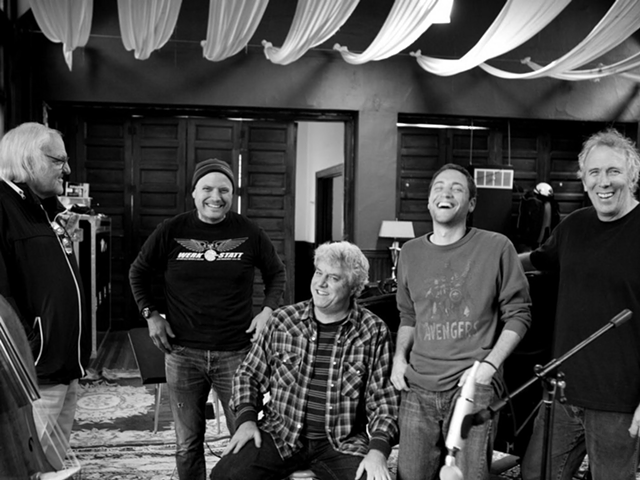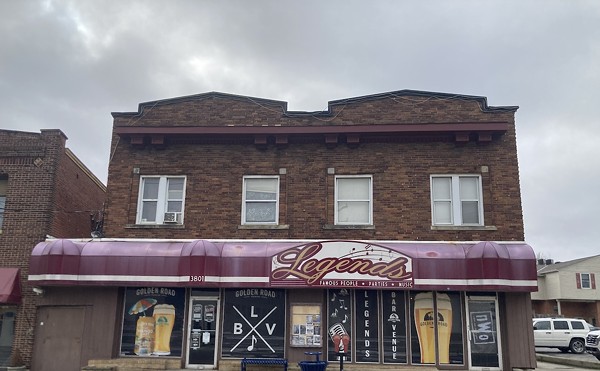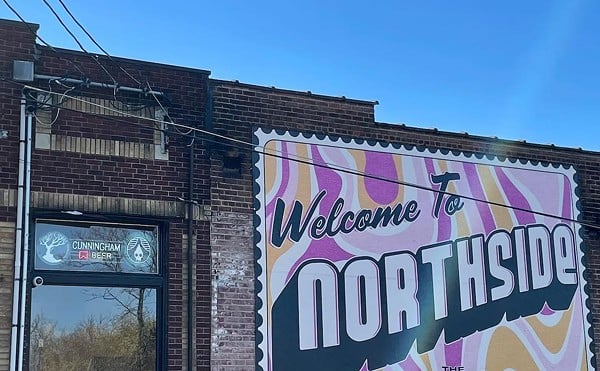To take a page from Judy Collins’ notebook, Lydia Loveless has seen life from both sides now.
After a childhood in tiny Coshocton, Ohio, a move to Columbus and a gig playing bass in her family’s New Wave/Rock band as a teenager, Loveless set out on her own musical path at the age of 17. In 2010, the 20-year-old Loveless released her debut album, The Only Man (produced Greater Cincinnati’s venerable David Rhodes Brown), which was critically acclaimed but just barely heard by the general public.
That same year, Loveless played a Bloodshot Records showcase at South by Southwest in Austin, Texas, and subsequently signed a contract with the esteemed modern Americana label. Her debut for the label, 2012’s brilliant Indestructible Machine, featured a great story hook with the song “Steve Earle” (not about the singer/songwriter but a quasi-stalker/celebrity wannabe who shadowed Loveless). Bloodshot’s reputation and distribution resulted in an exponential rise in profile, and every media outlet that heard the album recognized Loveless’ obvious talent.
Once the touring cycle for Indestructible Machine was complete, Loveless confronted the lingering question that faces every artist in the wake of sudden success — namely, how to follow up the vehicle of that success. Some people can’t wait to get back to the studio to prove that their previous triumph was no fluke and was, in fact, merely a hint at their future potential. Loveless did not take that particular approach when she began work on what would become the just-released Somewhere Else.
“I got so freaked out by the ‘Alt Country princess’ (press comments) and all that shit that I was trying to recreate that magic and just shut my brain down,” Loveless says from her Columbus home with a laugh. “I rented this studio all to myself and would go there and usually just end up crying on the floor because I couldn’t write what I wanted to. I was reading a lot of (French poet) Verlaine, which is how he wound up in a lot of the songs and the artwork. I just decided I needed to scrap everything and start over and write what I wanted instead of trying to write the next really good Country album. I ended up making a kind of Pop/Rock record.”
Before the eventual Stones-meets-Replacements bash-and-twang of Somewhere Else, Loveless opted to drop Boy Crazy, a five-track teaser EP released last November that hinted at the direction she ultimately took on her third full-length. In some ways, the first two albums could be viewed as rocked-up Country, while Boy Crazy and Somewhere Else could be categorized as countried-up Rock.
“I was trying to show another side of my influences, and Paul Westerberg is definitely a huge influence,” Loveless says. “Any comparison to him would be cool,”
More than a few critics have cited the jangly, rootsy Boy Crazy as something of a transitional link to the direction Loveless has taken on Somewhere Else, but she’s quick to point out that’s not necessarily the case.
“They were different recording sessions and just a different mindset; we recorded Somewhere Else first, which is funny,” Loveless says. “I had this idea for a long time that I wanted to write about how much I loved baseball players when I was a kid, and kind of still do. I didn’t really accomplish that but there’s definitely a youthful theme and a different vibe running through the EP. That letting go that I had to do to write Somewhere Else, I had to do that even more so to write (Boy Crazy).”
In addition to her fairly diverse and voluminous musical influences — ranging from Country icons like Hank Williams and Merle Haggard to Modern Rock pioneers like The Velvet Underground, Television and Richard Hell to Williams’ Country-to-Death-Metal grandson, Hank III — Loveless created the lyrics on Somewhere Else from a very different outlook.
“Poetry was definitely an influence, particularly Paul Verlaine,” she notes. “There’s a song about him (‘Verlaine Shot Rimbaud’) and he influenced the album a lot. He has this poem, ‘Aspiration,’ which is basically about the discontent of being an artist and how no one cares anymore, and this was the 1800s, so it was already going downhill. It’s about how you always want something else or a different world, and that’s kind of the theme of Somewhere Else, and how I’ll always be semi-miserable and want something more. It’s a great lifestyle.”
Loveless’ constant feeling of unease and dissatisfaction may well be one of the reasons that she can write songs detailing dour personal circumstance even though she is quite happily married to her longtime bassist Ben Lamb. He also provides her with some much-needed perspective.
“My husband said just today, ‘If you ever achieve your goals, you weren’t ambitious enough,’” Loveless says, laughing. “I think it comes from watching too many movies where the credits roll after the person gets the girl or the job, and then he was happy. I’ll never feel like that, ever.”
Always an incendiary performer, Loveless admits that the adrenalized atmosphere of Boy Crazy and Somewhere Else have had an impact on the way she performs her old songs. At the same time, she notes that the difference in her previous material is not simply a matter of an uptick in tempo, it’s a result of relating differently to songs written long before now.
“(The new songs) definitely change the way I feel about the old songs,” Loveless says. “It changes the way I think about them now, having gone through different things. Songs have almost changed meaning for me. It’s interesting to think about where I was; I can’t even remember the person I was when I was writing those, which is the weird thing about being a songwriter. You go through something and you put all this energy into it, then you black out your actual life. But I’m glad they exist.”
LYDIA LOVELESS performs Friday at the Southgate House Revival with The Screaming Walls. Tickets/info: southgatehouse.com






